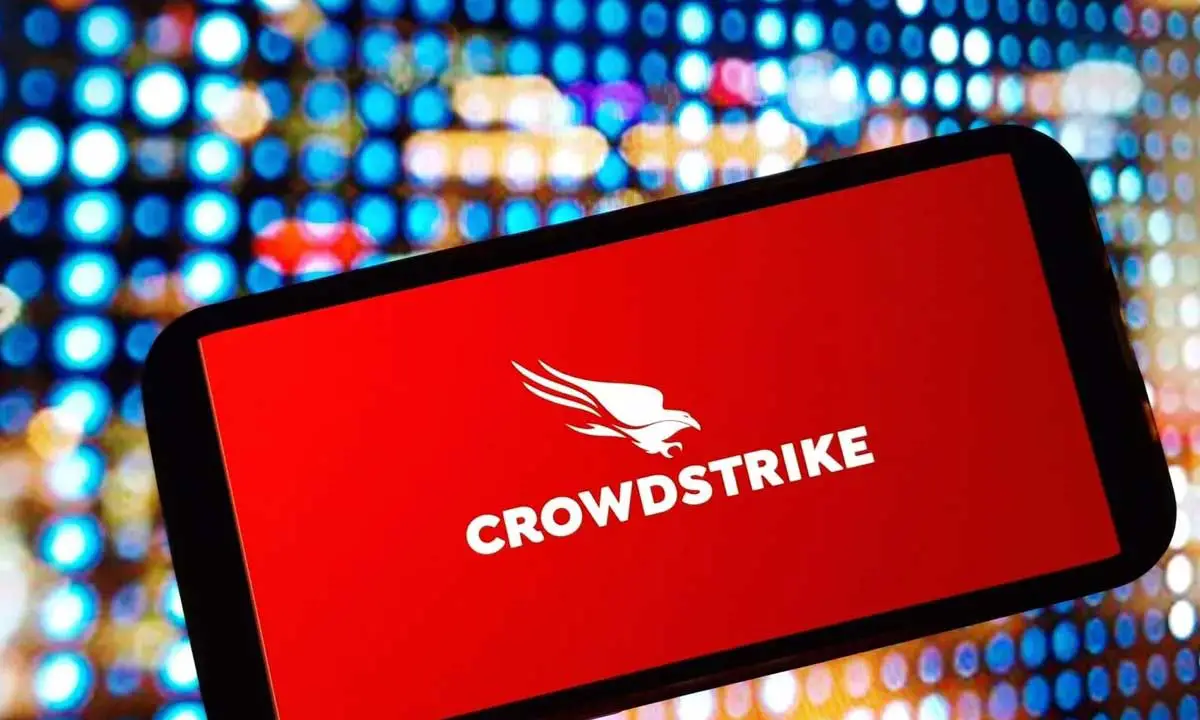CrowdStrike Lays Off 5% of Workforce in Strategic Overhaul After 2024 IT Disaster
CrowdStrike Holdings, the prominent U.S.-based cybersecurity firm known for its cutting-edge digital threat protection tools, has announced a significant restructuring of its global operations. In a move that reflects both a response to recent adversity and an ambitious pivot toward long-term growth, the company revealed plans to cut approximately 5% of its workforce — a decision that will impact roughly 500 employees worldwide.
This restructuring comes on the heels of one of the most catastrophic software failures in recent memory. In mid-2024, a defective update to the company’s flagship Falcon Sensor security software sparked a global IT meltdown, affecting millions of Microsoft Windows systems. From air traffic control systems to banking networks and hospital infrastructure, the ripple effect of the failure was felt across nearly every major industry, causing financial losses upward of $10 billion globally.
As the dust continues to settle from that devastating episode, CrowdStrike is making it clear that it intends to turn crisis into transformation — and that means making tough decisions today to protect its future tomorrow.
The 2024 Outage: A Crisis That Shook the Industry
In July 2024, CrowdStrike released an automatic update to its Falcon Sensor, a core security component installed across millions of Windows-based systems worldwide. What was intended to be a routine enhancement instead turned into a nightmare. The update triggered system failures at an unprecedented scale, with as many as 8.5 million devices rendered unusable.
The incident crippled everything from commercial airlines and hospital records systems to government databases and financial services. International airports ground to a halt. Emergency rooms had to revert to manual patient tracking. Businesses of all sizes faced interruptions that lasted days or even weeks. Analysts later dubbed it one of the most expensive and disruptive IT failures in cybersecurity history.
Despite CrowdStrike’s swift efforts to deploy a fix, the damage was immense. The company’s reputation took a significant hit, and its market capitalization plunged by over $20 billion in the immediate aftermath. While legal actions and investigations loom in various jurisdictions, CrowdStrike has spent the past several months focusing on customer recovery, systems repair, and internal reassessment.
Strategic Layoffs: A Calculated Pivot Toward Future Readiness
According to CrowdStrike’s CEO George Kurtz, the recent job cuts are not merely a response to last year’s catastrophe. Rather, they represent a broader transformation strategy. In a message to employees and regulatory filings, Kurtz described the layoffs as part of a critical “inflection point” for the company.
With the cybersecurity sector undergoing rapid shifts — driven largely by the explosion of AI-powered threats and tools — CrowdStrike is preparing to reposition itself as a leaner, more agile organization capable of scaling rapidly while maintaining its technical edge. The company’s goal: reach $10 billion in annual recurring revenue while sustaining innovation leadership in an increasingly crowded market.
The layoffs, while difficult, are said to affect primarily administrative roles and redundant positions. Affected employees will receive severance packages and outplacement support. CrowdStrike estimates restructuring-related charges between $36 million and $53 million, which will be recognized over the current and upcoming fiscal quarters. The layoffs are expected to be completed by July 31, 2025.
Embracing AI: The Next Chapter for CrowdStrike
Central to CrowdStrike’s revised strategic roadmap is the deep integration of artificial intelligence into every facet of its business — from threat detection and prevention to incident response and automation.
According to company insiders, the 2024 outage acted as a painful catalyst that exposed weaknesses in existing deployment and testing workflows. In response, CrowdStrike has reengineered its quality assurance systems, introduced multi-phase sandbox testing environments, and committed to enhanced transparency with enterprise clients regarding upcoming changes and system updates.
Going forward, the company will be channeling greater resources into AI-driven cybersecurity tools that offer predictive threat modeling, real-time response automation, and intelligent incident triaging. CrowdStrike has hinted at partnerships with leading AI firms to co-develop algorithms that can adapt to evolving attack patterns with minimal human intervention.
These AI capabilities will be embedded across its Falcon platform, enhancing products such as Falcon Insight, Falcon Overwatch, and Falcon Identity Protection. For customers, this means faster responses, fewer false positives, and smarter integrations with existing security infrastructure.
Market Response and Investor Sentiment
The announcement of layoffs was met with mixed reactions on Wall Street. While CrowdStrike’s stock dipped nearly 4% in early trading following the news, financial analysts were quick to emphasize the company’s strong fundamentals and long-term prospects.
In its latest quarterly earnings report, CrowdStrike posted a 25% year-over-year revenue increase, reaching $1.06 billion — a sign that, despite recent setbacks, demand for its products remains robust. The company also reaffirmed its financial guidance for the current fiscal year, projecting healthy profit margins and steady growth in enterprise customer adoption.
CEO George Kurtz and CFO Burt Podbere assured investors during an earnings call that the layoffs and restructuring would not compromise core product development or customer support. Instead, they said the moves would free up capital for investment in next-generation technologies and ensure the company remains at the forefront of the cybersecurity arms race.
Industry Trends: A Wave of Tech Layoffs and Refocusing
CrowdStrike’s decision mirrors broader trends across the technology and cybersecurity sectors. Over the past year, numerous high-profile firms — from Google to Meta to Cisco — have announced significant layoffs, citing macroeconomic pressures, overhiring during the pandemic, and the ongoing integration of artificial intelligence as key drivers.
In the cybersecurity space, companies are especially focused on streamlining operations and accelerating innovation. As threat actors become more sophisticated, especially with the use of generative AI and state-sponsored attacks, the pressure on cybersecurity vendors to stay one step ahead has never been greater.
CrowdStrike’s layoffs reflect a wider shift from growth-at-all-costs to sustainable, focused innovation. By reducing internal complexity and investing heavily in AI, the company hopes to transform the painful lessons of 2024 into a competitive advantage moving forward.
Rebuilding Trust: A Mission of Transparency and Reliability
Perhaps the biggest challenge for CrowdStrike now is not technological — but reputational. The 2024 IT outage left a deep scar on the company’s image as a reliable guardian of digital infrastructure. Rebuilding that trust will require consistent, transparent, and customer-centric communication.
To this end, the company has launched a global customer outreach initiative. Enterprise clients are being offered extended support contracts, in-person consultations, and early previews of upcoming platform changes. Additionally, CrowdStrike has instituted a new internal unit focused solely on deployment risk management, staffed with top engineers and QA specialists tasked with ensuring that no update ever again goes live without passing multiple independent safety checks.
The company also plans to publish quarterly transparency reports detailing the health and reliability of its software — a move designed to assure clients and partners that CrowdStrike is serious about accountability.
Looking Ahead: A Stronger, Smarter, More Secure CrowdStrike
While layoffs are always painful — especially for the talented professionals whose roles are eliminated — the mood at CrowdStrike remains cautiously optimistic. Employees and executives alike are framing this restructuring as a necessary evolution rather than a retreat. In many ways, the company’s future now hinges on its ability to walk the fine line between resilience and reinvention.
CrowdStrike’s broader ambitions — from expanding into new international markets to redefining cybersecurity with AI — are still very much alive. The company has already begun beta testing several new AI-powered modules designed to improve endpoint security, identify zero-day exploits, and simplify the threat response process for IT administrators.
If successful, these advancements could restore confidence among investors, rebuild relationships with clients, and reestablish CrowdStrike as a pioneering force in an industry where trust and innovation are paramount.
Final Thoughts: Turning Setbacks into Strength
The events of 2024 will undoubtedly serve as a cautionary tale for CrowdStrike and the tech industry at large. But if there’s one message the company is sending now, it’s this: adversity can be the foundation for transformation.
With a renewed focus on operational discipline, a clear strategy for integrating AI, and an aggressive roadmap to recovery, CrowdStrike is aiming to emerge from its darkest chapter not just intact, but better than ever.
As the cybersecurity landscape continues to evolve rapidly, only time will tell if these bold moves pay off. But one thing is certain: CrowdStrike is not backing down from the challenge — it’s preparing for the next frontier.
Read Also:

